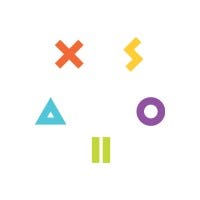Exploring Steam's Digital Item Economy
Steam's marketplace has become big business for consumers and developers thanks to the rise of digital items. Today's post examines what is being traded and how consumers are able to make a profit.

As we've talked about plenty of times on the Xsolla blog, the digital market has become one of the biggest changes to how we buy, sell and design video games. And at the heart of this restructure is how digital items are now a part of an economy thanks to Valve and Steam.

For today's post, we're going to talk about what these items are and why they are meaning big bucks to both the developers and the consumers.
The Digital Portfolio:
The selling of digital items has been going on for years since the days of Diablo 2, Everquest and other games built around digital goods. Back then, developers didn't like this for two reasons -- it allowed people to buy advantages and they didn't receive any profit.
After hacking and duplicating items came to Diablo 2, Blizzard cracked down and started banning accounts that made use of this. But that didn't stop a number of third party sites from buying and selling items and this period is where the term and profession of “Gold Farmer" became popularized.
Incidentally, the desire to both control and profit from selling digital items is what rumored to have led Blizzard to adopting both the always online DRM and the auction house for Diablo 3. The former was meant to prevent people from duplicating items and the latter was supposed to be a legitimate way to buy and sell items. However this did not work out well for Blizzard for reasons that are beyond the scope of this piece.
But where Blizzard failed, Valve with the Steam marketplace has succeeded in not only fostering a digital economy but also figuring out a way for both the store and the consumer to earn money. And to talk about why, we have to look at the content that is being bought and sold.
Items:
Similar to Diablo 3 and MMOs, being able to buy items is one of the big draws of Steam. Currently there are three games from Valve that have items to buy and sell -- DOTA 2, Counterstrike Global Offensive and Team Fortress 2.
Despite being completely digital, the pricing for these items are weighted just like real world items with rarity and popularity being the two big factors. Each game has items that are tied to rarity tiers like common, rare, unique, etc.
Items that are either considered rare due to their tier or were locked to a one time promotion are the big ticket sales. A famous example of this would be the infamous Mac ear buds that were part of a onetime promotion for Team Fortress players to load up the game on a Mac. These items today go for at least $38 a piece but were originally the benchmark for the Team Fortress economy.
 The Mac promotion for Team Fortress was the basis for the digital economy for the game.
The Mac promotion for Team Fortress was the basis for the digital economy for the game.
Buying and selling digital items are most popular among the hardcore fans of the series. These fans are heavily invested in the game and want to show both their support and dedication by having these rare items on their account.
Next we have a recent addition to the Steam marketplace -- Stream Trading Cards and how they have grown in popularity.
Trading Cards:
Trading cards have become a major part of the Steam economy thanks to how anyone who plays games on Steam can be a part of it. Trading cards are a part of selected games on the service and are earned after playing the game for a certain period of time. A user can only ever earn half the available cards per game while the rest must be either bought or traded with other people.
Completing sets of cards unlock badges that can be displayed on your account and special rewards and similar to real world trading cards, there are rarer or foil versions of cards that are harder to find and worth more.
Again, despite the fact that we are dealing with digital items, rarity and popularity are major factors. Cards at the moment are priced lower than digital items because of how many of them can exist at one point. Niche titles that have trading cards tend to price higher than popular games as there are less people playing them ergo less cards available.
 Steam Trading Cards became a surprise hit.
Steam Trading Cards became a surprise hit.
The accessibility of the cards combined with how little actual work is needed by the developer makes trading cards very popular for both consumers and the developers. Because this is a deal between the developer and Valve, we don't know too much about the specifics other than the developer has to talk to Valve and submit something that will represent the art on the cards.
With these two cases, the majority winner would have to be Valve who receives a portion of any sale transaction made on Steam, but our final point hints at ways for consumers to hit it big with digital items.
Creating Content:
The ability for consumers to make custom content for video games is not new. Modders have been creating everything from skins, levels and even conversions of games over the years. These mods have always been free and considered separate from the game and therefore not involved by the developer.
But with the ease and popularity of digital items being created, these items can become very lucrative for people. By creating custom content that is then adopted by the developer, the creator can receive a portion of the sales which can mean big bucks.
 Commander skins for Planetary Annihilation are the latest example of items where the creator can receive royalties on sales.
Commander skins for Planetary Annihilation are the latest example of items where the creator can receive royalties on sales.
When Team Fortress 2 first opened up to have modders create content, they chose the five best members to be featured in an update dubbed “The Polycount Pak." With the royalties they earned from their items being featured in the Team Fortress 2 store going for over $35,000 in the first two weeks on sale. And Valve continues to give the community opportunities to submit items to possibly become a part of the Team Fortress store and get royalties from the sales.
Another example would be Planetary Annihilation who during their kickstarter offered people who backed at the $1,000 tier the ability to create their own custom commander (in game unit skin.) Those commanders are now on sale through the game's in game store and those backers earn royalties for the commanders they pitched that are sold.
Future Content:
As we continue to transition to the digital space, digital items are going to become more valuable and as we've seen, a big deal for consumers, developers and modders. The Steam Workshop -- An area on Steam where you can upload custom content has been huge in making both modders and their content accessible to everyone. And it will be interesting to see just how far digital items will go now that developers are embracing the buying and selling as opposed to fighting it tooth and nail.
( Reprinted from the Xsolla.com Blog)
Read more about:
BlogsAbout the Author(s)
You May Also Like













